Computer and video games are the largest and most lucrative form of media entertainment today. But it’s a mistake to think of games as a new phenomenon – at this point, their history stretches back over 50 years. Generations of gamers have grown up and passed on their love of gaming to their children. So why is it so hard to find and play the classic games we enjoyed in our youth?
Music and movies are far smaller industries, yet the internet has made it possible to conjure up almost any 1980s movie or 1990s pop song at the push of a button. Why not games?
“I can find any bit of music I grew up with as a kid. Any movie I want to watch anywhere digitally, either streaming or download,” muses Antstream Arcade CEO Steve Cottam when we speak in February. “But most [retro] games have disappeared.”
For nearly 10 years, his company has been on a mission to change that. Antstream Arcade is a cloud gaming service that specialises in classic games, ready to stream and play instantly. The library contains 1,300 titles, from the 8-bit days up to the PlayStation 1, all officially licenced, ready to play right now on all the most common platforms.
With the announcement at CES that the Antstream Arcade service would soon be available in Mercedes-Benz in-car entertainment systems, Antstream Arcade is rapidly becoming the most widely accessible game streaming service.
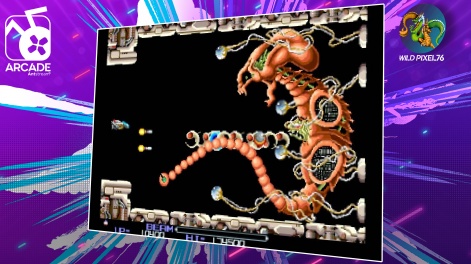
We quiz Steve Cottam on his background, his ambitions, and why it’s important to preserve and share these retro classics.
Let’s start with your background. How did you get into retro gaming?
My love for this stuff goes back to the early ’80s. When I was growing up, the first computer I had was the Dragon 32. Then, my dad brought home a ZX Spectrum for a few days from work, and I got to play on that. Alchemist, I think, was one of the games!
But my real love started when I got the MSX. I was one of the very few people in the UK, I think, to have the MSX.
I was frustrated that I couldn’t get the games I loved. I could download an emulator and a ROM, and go through the pain of that, but it can be complex. Retro gaming is often inaccessibleSteve Cottam
That came bundled with Manic Miner, and I played that game to death and absolutely loved it. I was mesmerised by the fact that I could control these things on the screen. That set me off on learning to code. So I taught myself BASIC on the MSX.
And I started to learn a bit about assembler [language] because I wanted to make games. I learned a bit of Z80. Then I moved over to the Amiga and really got into assembly code and 68000 on the Amiga. I was blown away by what the Amiga could do with music and graphics. I went on from there and then went through all the consoles: SNES, the Mega Drive, PlayStation...
I wanted to get into games but couldn’t get a job! So I set up my own studio called Torc Interactive. And we released a game called Nitro Racers, a top-down racing game, a bit like Super Sprint. It might have been the first PC game to do an eight-player network.
We tried to do another game and hit a wall with that. So I ended up going to work in the city in IT. Did that for about a decade and worked on some pretty interesting stuff, including the government’s Y2K project. I was working in big banks within their data centres and things like that. But I was still keen on gaming. Every year, I’d go out to E3 and keep my connections going.
Fast forward a little bit, and I was doing a project for one of these banks where we were streaming desktop computers over the wire to a dumb terminal on a desk. It was cloud streaming, essentially. And cloud gaming had just started to become a thing back in 2012.
And I thought, it will still be a while before we’ll be streaming AAA games, but actually retro games... you could do it! I was also frustrated that I couldn’t get the games I loved. I could download an emulator and a ROM, and go through the pain of that, but it can be complex. Retro gaming is just often inaccessible. Unlike music and movies!
I can find any bit of music I grew up with as a kid. Any movie I want to watch anywhere digitally, either streaming or download. But most of these games have disappeared. And I thought, well, this needs solving. And Antstream was born!
What was the original team set-up?
It was me and a friend. We kind of did it as a hobby, a bedroom project, I suppose. We had day jobs! We did it in our spare time. But we chipped away at it for a couple of years till we had a prototype. I took it to show Ian Livingston in 2015 and invited him to join the company as the chairman. And he did!
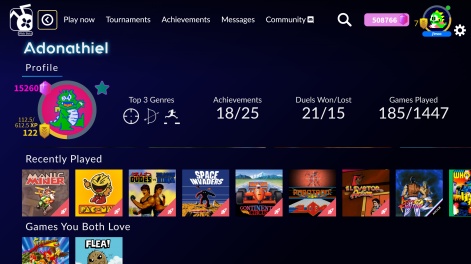
He then introduced me to Darren Melbourne, who became our licensing director. Darren knows just about everybody in the games industry, particularly from that early era. And it just went from there.
We applied for an accelerator fund with Microsoft and got accepted into that. There were some 800 companies which applied, but only eight got through, and we won. That gave us a bit of mentoring. Then we raised some investment. This is now 2019: we got some investment from Tencent, and that’s when things really started to pick up.
How many platforms are you on now?
We’re pretty widely available! We’re out on PC, Linux, Mac, Android, Xbox. We’re integrated with Samsung Smart TVs. And we will be integrated into every new Mercedes (I think they just talked about that at CES). There’s a whole range of other devices.
And you can probably guess where we’re going to go. By the second half of this year, we will probably be the most accessible gaming platform on the planet. Antstream will be in more places than anyone else. Incredible – and perhaps a little bit insane for a company of our size!
That was always the mission here. It was to get these games and make them available to everyone, wherever you areSteve Cottam
But that was always the mission here. It was to get these games and make them available to everyone, wherever you are. This is one of the reasons I went for cloud gaming. People sometimes ask, “Why are you streaming a Commodore 64 game? They’re tiny.” And it’s about accessibility. It’s about getting it on all your devices and not having to download and manage files.
It’s also about a consistent experience. Even when you get to the PlayStation game era, where the ROM sizes are quite big, I still want to click and play. I don’t want to worry. I don’t want to download. Just streaming across the board.
What steps do you take to make sure it’s a smooth experience? Cloud gaming has always had challenges, like latency.
It’s really interesting. Latency is obviously something I’m passionate about. We measure the latency that our gamers experience when they’re playing. A lot of it has to do with a couple of things: how close the user is to the server and how good those routes are between the user and the server.
Some of those things we can control, and others we can’t. That is true of all cloud gaming. Sometimes, you might find yourself on a noisy network. There’s nothing [the service] can do about it if I’m trying to stream a game while my son’s hammering the internet connection by downloading something on Steam upstairs. It’s probably going to have an impact!
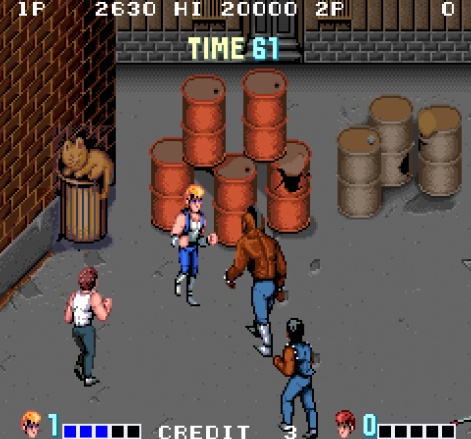
But broadly speaking, most people’s connections now shouldn’t see any problems whatsoever. We spend more money to keep the latency down. We could cluster our servers together more centrally and reduce costs. But that would have an impact on latency for some people. So we don’t; we spread the servers as far and wide as we can. And that’s really important.
We have a target: every game must launch in under three seconds. Doesn’t matter what it is. I don’t want to wait for a server to spin up. Click and play. We measure it every week – we look at the latency. And if the average latency goes up, we say, “Guys! We need more servers! Put them out there!”
Given their smaller file size, it must be easier to achieve that with retro games than modern games?
Truthfully, yes. That was always my strategy – start with things that are easier to stream, and roll forward. There will come a time when we are delivering 4K streams! As “retro” moves forward. Big 4K games will be will be retro in the future. So, we’re rolling forward.
These games are just fun. There are only so many actual core gaming concepts, and most of the mechanics were worked out quite early onSteve Cottam
But obviously, the pace at which the data centres and the technology are moving forward is faster than we can keep up with. So I’m not worried about that. When we get to those high-definition games, the infrastructure will be there to support it. Services like [Google] Stadia did a great job, but it’s tough to start with high-definition games!
What other factors do you also consider, like the control schemes? What goes into creating an authentic experience?
We put a lot of time and effort into every game, and we remap the controls. Whether you’re on an Xbox controller, a mobile phone, or a keyboard or mouse – it’s not always possible, but we wanted it so that if you’re a new user coming in, [it’s accessible]. Part of the mission here is also to make these games available not just to people who played them originally but also to new generations of players.
A lot of the games used to be played using [the keys] QAOP. It wouldn’t make any sense to map the movement of a character in a game to QAOP today, so we have a consistent mapping. So when you pick up a game and play it, the directional controls are always the same, regardless of the original game. The kick and punch are broadly the same buttons, regardless of the game you’re playing. So you can dip in and out of the games as a new user, maybe seeing them for the first time, and they should feel intuitive to use.
Is your primary audience those people seeking a nostalgia hit?
It’s a mix, definitely. We’ve got a huge number of people who are just massive retro gaming fans. But what’s amazing to me is there are a lot of others. Particularly when we go to shows, we get a huge amount of people spending time (sometimes all day!) on the stand playing our old games – and they’re teenagers or in their early 20s! They love it.
I think it’s the challenges and tournaments we’ve built around the games. So if you want to, you can go in, and you can just play Pac-Man. Or you can go in and see all the challenges we’ve created; maybe every time you eat, one ghost goes blue immediately, and you just play for the ghosts, or we clear out the maze of all the dots, and it’s about how long you can survive without eating a dot. We do all this, and it really engages the users, and over and over again, they’re constantly trying to beat their score.
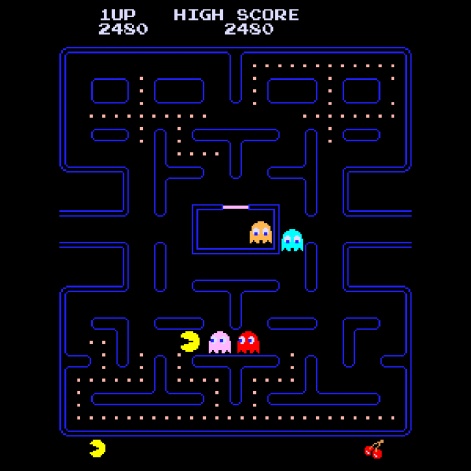
And this makes every game multiplayer as well. It’s 100% a social experience. Competitiveness is a big part of gaming, especially now, even if it wasn’t so much back in the day. My favourite game is Manic Miner – it’s the one that always inspired me. Now, I can compete with my friends in the world of Manic Miner. I’m not on the leaderboards anymore, but I was for a short while!
What is it about retro gaming that’s so appealing to people today?
Nostalgia is one thing – and it’s not just in games; it’s true of everything. I still hanker after the cars I had posters of on my bedroom wall when I was a kid! They’re cars from a similar era, and they still have that same kind of appeal. As we get older, we look back fondly on those earliest memories. These things just connect you. Same as music. There are pieces of music I listen to today that I listened to as a kid. The hairs on the back of my neck go up – they have that effect.
It’s definitely not nostalgia for the younger players. But it’s “retro cool”, right? It’s like going into the attic of your parents’ house, finding your dad’s Bob Marley albums, dusting them off, and thinking, “This is cool. None of my friends know about this.” There’s that kind of discovery thing.
It's quite rewarding that sometimes we meet the original developer. An example is Matthew Smith, who created Manic Miner. It’s nice to be able to give something backSteve Cottam
These games are just fun. They’re fun! There are only so many actual core gaming concepts, and everything else is a derivation of those. Most of the mechanics were worked out quite early on. Look at the first-person shooter: it hasn’t changed that much over the last decade.
We’ve got a culture now where people pick up their phones; they have a five-second attention span as they swipe to the next piece of content. And these games are very much like that. You go, and you play one for a few minutes. Another one, then another one, and another one…
Currently, the platform promises some 1,300 games. How do you go about choosing what’s in your library? What are your criteria?
We go looking for the games. Some games on our platform took us five years to find – or perhaps we found them early on, but it took us five years to convince those IP owners to let us try them. Because particularly in the early days, as a new, unknown service, people were unsure.
Now it’s changing, and we’ve got people constantly contacting us to say, “Can I put my game on your platform?” I particularly love this: an incredible community of indie developers is still making new games for those original systems. Just this week, I had somebody message me and say, “I’d love to have my game on Antstream. Can I get it on there?” That’s good for us to see.
But Darren, Mike [Rouse], myself and other people in the team, we remember the games we liked. And we are tuned in across that period, so I think we know what people like very well. We go out, find them, and negotiate.
Was there a particularly challenging title that took a ton of negotiation?
I won’t name them. But have there been? Yes. And that could be for a number of reasons. Sometimes, it’s financial; some of the bigger publishers take a cautious approach with their IP, and that’s understandable.
But oftentimes, it’s about finding who actually owns the IP; because many companies have gone out of business, the IP has changed hands. Sometimes, we go to companies and say, “You own this game, and we’d love to bring it to Antstream.” And they say, “Do we?!” We’ve built a big database of that over the over the years. It’s fascinating.
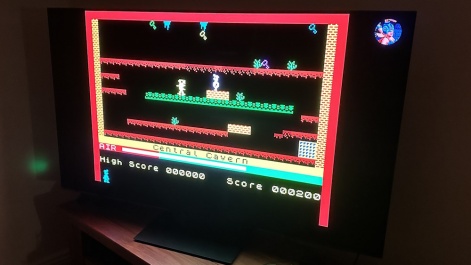
The other thing that’s quite rewarding is that sometimes we meet the original developer. An example is Matthew Smith, who created Manic Miner. He is not really in the games industry anymore; I don’t know what his situation is now. But it’s nice to be able to give something back to the original developers.
I have a framed picture of Matthew Smith and me just after we’d done the deal. Darren got it for us as a Christmas present.
Are there any other personal favourites you’re still keen to hunt down?
We’ve got more platforms. The only reason we weren’t on iOS was purely because of Apple Store rules. But that’s changing nowSteve Cottam
We’ve got 1,300 games on the platform, but we’ve licensed around 3,000. So there’s plenty more to come! But it takes takes time to bring them in. I’m a big fan of the Japanese arcade classics: SNK, Konami, Sega, Data East, Capcom, Taito, Jaleco to name a few… Ultimately, I’d like to see every retro game on the platform, but that’s a decade-long vision.
Are there games that are emerging as the users’ favourites on the platform? Have you been surprised by any titles the players have taken to?
Some of it’s very predictable! Very well-known game brands that have been hugely popular over the decades always do incredibly well.
Some of it we can influence. So if we create a challenge or tournament around a particular game and promote it, that will bring awareness to that game. And then, after we’ve done that, that game will get played more. So that’s, again, quite rewarding: we can bring these games to the surface, which otherwise may not get noticed.
One of the challenges of so many games must be in their curation and discoverability. Things are tagged and cross-referenced, but there’s a vast library to search. How do you foreground games and make sure things are findable?
Whenever a game gets added to the platform, it goes into the New Releases section. So that helps people find it. And by creating challenges and tournaments, we can help promote those games. We try to balance that out fairly across our partners.

The community helps with this. There was a video that was just sent to me today. Someone on YouTube right now is playing every single game on Antstream – they’re on day ten. He’s not the first person to try that!
Of course, there’s a search [tool] – you can go in and search for racing or fighting or SNK or whatever you want.
There’s a new interface coming later this year and that does a much better job of curating games for you. As it starts to see the games you like to play, it will start making recommendations to you (just like you find on Netflix or Spotify and other platforms like that).
Can you tell us about anything else that’s coming up? What else are you currently working on?
It is doing more of what we do. We add more games every single week and more challenges and tournaments every single week. That’s constant. And that’s because we want it to be fresh for the gamers there.
Latency is something I’m passionate about. We measure the latency that our gamers experienceSteve Cottam
This new interface is coming, which completely changes everything about how you discover and find games.
I don’t want to give away too much, but there are some new multiplayer modes coming in, too. New rewards and incentives for the players.
We’ve got more platforms. We’ll be distributing on one that I don’t think will surprise anyone! So, iOS has recently relaxed the rules on what you can do in its store. The only reason we weren’t on iOS was purely because of Apple Store rules. But that’s changing now, and that’ll definitely be something we’ll tackle this year. (And some others that I think people are going to be pretty pleased about as well.)
Our pricing – particularly on Xbox – is quite interesting! Antstream is £29.99 for the entire year, which is considerably cheaper than any other subscription service. But we also have, for a short time, a lifetime deal: £79.99. No other cloud gaming service has offered that. Grab that one! And it’s going to get bigger.
I can’t wait to announce more: we have a new game announcement coming up in the next month. It’s constantly changing and fast-moving, that’s for sure.

You can find out more about Antstream Arcade on its official website and social media pages. You can read about how London’s Science Museum is also doing its bit to preserve classic games and consoles over on our partner site BeyondGames.biz.

















